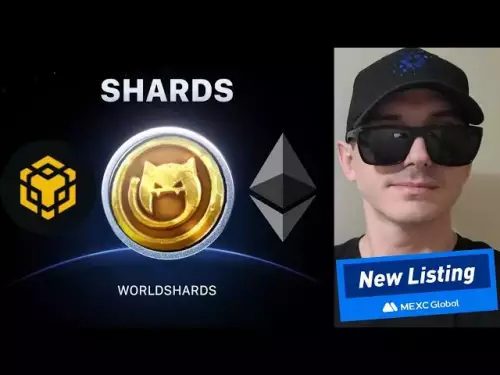-
 Bitcoin
Bitcoin $110000
-1.38% -
 Ethereum
Ethereum $4353
-1.95% -
 XRP
XRP $2.834
-1.20% -
 Tether USDt
Tether USDt $1.000
0.02% -
 BNB
BNB $847.1
-1.38% -
 Solana
Solana $206.1
-2.42% -
 USDC
USDC $0.9999
0.02% -
 Dogecoin
Dogecoin $0.2144
-1.54% -
 TRON
TRON $0.3378
-0.74% -
 Cardano
Cardano $0.8127
-2.69% -
 Chainlink
Chainlink $23.06
-2.34% -
 Hyperliquid
Hyperliquid $45.24
-0.77% -
 Ethena USDe
Ethena USDe $1.001
0.03% -
 Sui
Sui $3.285
-2.46% -
 Bitcoin Cash
Bitcoin Cash $588.1
-1.85% -
 Stellar
Stellar $0.3577
-1.93% -
 Avalanche
Avalanche $24.66
-2.52% -
 Hedera
Hedera $0.2129
-3.80% -
 Cronos
Cronos $0.2658
-2.11% -
 UNUS SED LEO
UNUS SED LEO $9.522
0.19% -
 Litecoin
Litecoin $110.6
-1.80% -
 Toncoin
Toncoin $3.122
-1.79% -
 Shiba Inu
Shiba Inu $0.00001212
-2.78% -
 Polkadot
Polkadot $3.770
-2.40% -
 Uniswap
Uniswap $9.346
-2.95% -
 Dai
Dai $0.9999
-0.02% -
 Monero
Monero $269.5
0.04% -
 Aave
Aave $319.6
-1.91% -
 Ethena
Ethena $0.6907
-5.62% -
 Bitget Token
Bitget Token $4.891
-3.49%
What is the difference between Etherscan and BscScan?
Etherscan and BscScan serve Ethereum and Binance Smart Chain respectively, offering similar tools but for different networks, tokens, and consensus mechanisms.
Sep 04, 2025 at 07:55 pm
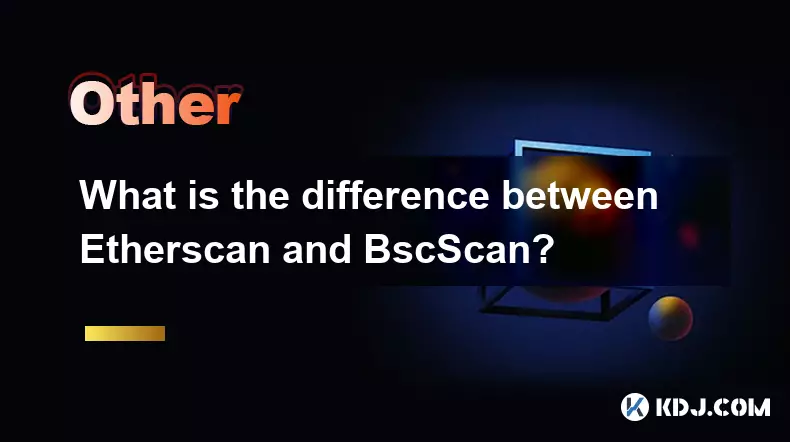
Differences in Blockchain Networks
1. Etherscan operates exclusively on the Ethereum blockchain, providing transparency and data tracking for all transactions, smart contracts, and wallet addresses within the Ethereum ecosystem. Every interaction on Ethereum, from token transfers to decentralized application usage, is indexed and searchable through Etherscan.
2. BscScan, on the other hand, serves the Binance Smart Chain (BSC), a separate blockchain developed by Binance to offer faster transaction speeds and lower fees compared to Ethereum. While structurally similar to Ethereum in supporting smart contracts and decentralized applications, BSC uses a different consensus mechanism and validator structure.
3. The foundational difference lies in the underlying network each explorer supports. Ethereum uses a proof-of-stake (PoS) model after The Merge, whereas BSC employs a proof-of-staked-authority (PoSA) mechanism, combining delegated proof-of-stake with a limited number of validator nodes.
4. Because they serve different blockchains, assets tracked on Etherscan—such as ETH and ERC-20 tokens—are not the same as those on BscScan, which monitors BNB and BEP-20 tokens. Users must ensure they are checking the correct explorer based on the network their transaction was executed on.
5. Cross-chain confusion often arises when users send tokens via the wrong network. For example, sending a BEP-20 USDT using an Ethereum wallet address without selecting the BSC network can result in lost funds if not recovered properly.
User Interface and Functional Features
1. Both Etherscan and BscScan offer nearly identical user interfaces, reflecting their shared inspiration from blockchain explorer design principles. Each provides search bars, real-time transaction feeds, gas price trackers, and contract verification tools.
2. Etherscan includes advanced features such as token approval revocation, decentralized identity (ENS) integration, and support for layer-2 solutions like Arbitrum and Optimism through its ecosystem dashboard.
3. BscScan integrates tightly with Binance’s ecosystem, offering direct links to Binance wallets, staking platforms, and launchpad projects. It also displays validator information due to BSC’s PoSA model, which is less emphasized on Etherscan.
4. One notable distinction is that BscScan often lists newly deployed tokens faster than Etherscan verifies ERC-20 contracts, reflecting differences in verification processes and community moderation.
5. API access is available on both platforms, allowing developers to integrate blockchain data into external applications, though rate limits and documentation structures vary slightly between the two.
Security and Trust Indicators
1. Etherscan has been operational since 2015 and is widely regarded as the most trusted Ethereum block explorer. Its long-standing presence and integration with major wallets and services enhance its credibility.
2. BscScan, launched in 2020, gained rapid adoption due to Binance’s influence but has faced scrutiny over centralization concerns. Since BSC relies on a small set of validators, some view BscScan as reflecting a more centralized network structure.
3. Both platforms highlight verified smart contracts, but Etherscan enforces stricter verification requirements, reducing the number of potentially malicious or cloned contracts visible in search results.
4. Phishing and scam warnings are implemented on both explorers, with Etherscan maintaining a more extensive blacklist due to the larger volume of attacks observed on Ethereum over the years.
5. Users are advised to confirm contract ownership and audit status before interacting, regardless of the explorer used, as neither platform guarantees the safety of a smart contract simply because it is listed.
Frequently Asked Questions
Can I use the same wallet address on both Etherscan and BscScan?Yes, many wallets like MetaMask support both Ethereum and Binance Smart Chain using the same address format. However, the balance and transaction history will differ depending on the network selected within the wallet interface.
Why does my transaction appear on one explorer but not the other?Transactions are specific to a blockchain. If you sent funds on Ethereum, they will only appear on Etherscan. If sent on BSC, they will only show on BscScan. Ensure you are checking the correct network based on where the transaction was initiated.
Are gas fees displayed in the same way on both explorers?Both show real-time gas pricing, but Ethereum gas is denominated in gwei (10^-9 ETH), while BSC uses gwei in BNB. BSC typically shows lower absolute fees due to its consensus model and lower network congestion.
Do Etherscan and BscScan support NFT tracking?Yes, both explorers allow users to view NFT holdings and transfer history for compatible standards—ERC-721 and ERC-1155 on Etherscan, BEP-721 and BEP-1155 on BscScan. NFT metadata and ownership are displayed when contracts are properly verified.
Disclaimer:info@kdj.com
The information provided is not trading advice. kdj.com does not assume any responsibility for any investments made based on the information provided in this article. Cryptocurrencies are highly volatile and it is highly recommended that you invest with caution after thorough research!
If you believe that the content used on this website infringes your copyright, please contact us immediately (info@kdj.com) and we will delete it promptly.
- Dogecoin's Key Indicator Flashes Buy Signal Amidst Market Drop: A New York Minute
- 2025-09-04 22:25:15
- Gold, Trump, and the Flight to Safety: What's Driving the Market in 2025?
- 2025-09-04 22:25:15
- BlockchainFX (BFX): The New Exchange Token Rivaling BNB and Hyperliquid?
- 2025-09-04 20:30:11
- Cardano Price, Pi Coin, Remittix Presale: Navigating the Crypto Landscape
- 2025-09-04 21:05:11
- Polygon, Blockchain, and India: A Web3 Powerhouse
- 2025-09-04 20:30:11
- Justin Sun, HTX, and High-Yield Products: A Deep Dive into Crypto's Latest Trends
- 2025-09-04 20:45:12
Related knowledge

How to find the block height of a transaction
Sep 04,2025 at 08:37pm
Understanding Block Height in Blockchain Transactions1. Block height refers to the number of blocks that have been confirmed on the blockchain since i...
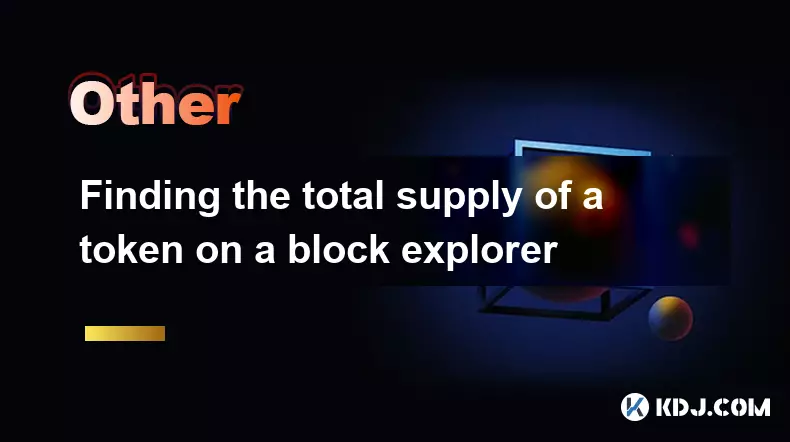
Finding the total supply of a token on a block explorer
Sep 04,2025 at 07:00pm
Finding Token Supply Information on Block Explorers1. Navigate to a blockchain explorer such as Etherscan, BscScan, or Solscan depending on the networ...

What is the difference between Etherscan and BscScan?
Sep 04,2025 at 07:55pm
Differences in Blockchain Networks1. Etherscan operates exclusively on the Ethereum blockchain, providing transparency and data tracking for all trans...
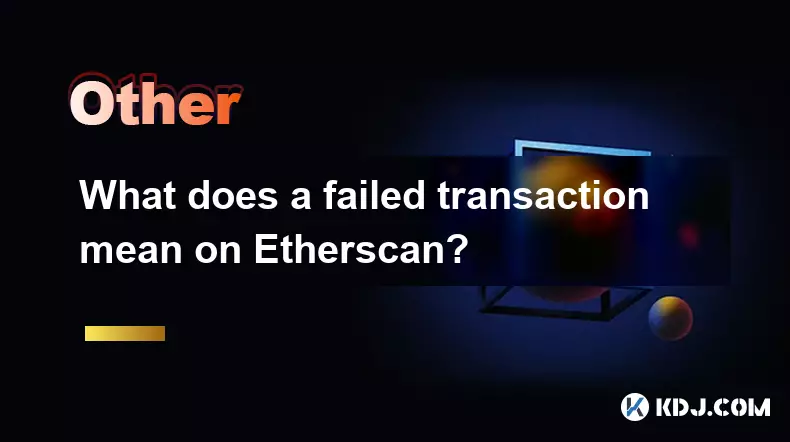
What does a failed transaction mean on Etherscan?
Sep 04,2025 at 05:55pm
Understanding Failed Transactions on EtherscanWhen users interact with the Ethereum blockchain, they often rely on Etherscan to monitor the status of ...
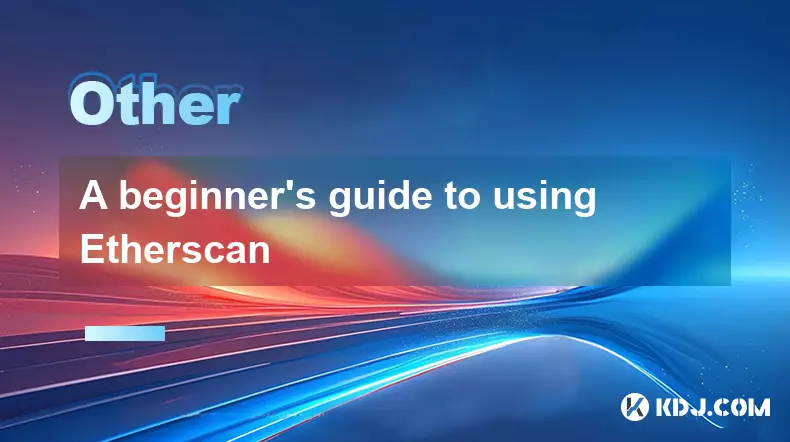
A beginner's guide to using Etherscan
Sep 04,2025 at 07:19pm
What Is Etherscan and Why It Matters1. Etherscan is a blockchain explorer specifically designed for the Ethereum network. It allows users to view real...
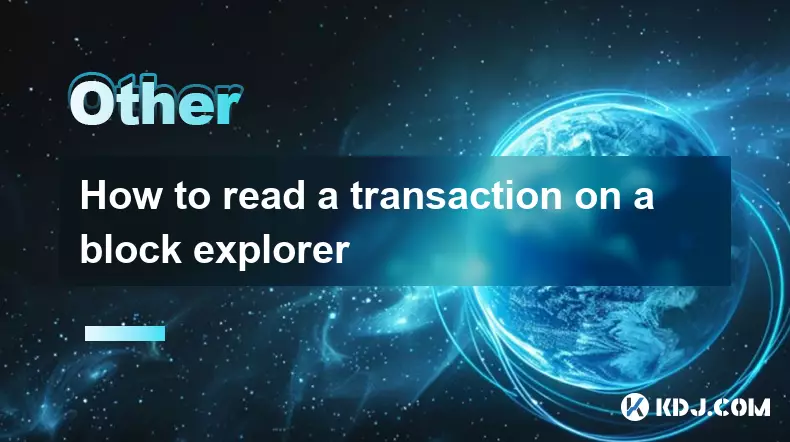
How to read a transaction on a block explorer
Sep 04,2025 at 10:01pm
Understanding the Basics of a Blockchain Transaction1. Every transaction recorded on a blockchain is publicly accessible through a block explorer, a t...

How to find the block height of a transaction
Sep 04,2025 at 08:37pm
Understanding Block Height in Blockchain Transactions1. Block height refers to the number of blocks that have been confirmed on the blockchain since i...

Finding the total supply of a token on a block explorer
Sep 04,2025 at 07:00pm
Finding Token Supply Information on Block Explorers1. Navigate to a blockchain explorer such as Etherscan, BscScan, or Solscan depending on the networ...

What is the difference between Etherscan and BscScan?
Sep 04,2025 at 07:55pm
Differences in Blockchain Networks1. Etherscan operates exclusively on the Ethereum blockchain, providing transparency and data tracking for all trans...

What does a failed transaction mean on Etherscan?
Sep 04,2025 at 05:55pm
Understanding Failed Transactions on EtherscanWhen users interact with the Ethereum blockchain, they often rely on Etherscan to monitor the status of ...

A beginner's guide to using Etherscan
Sep 04,2025 at 07:19pm
What Is Etherscan and Why It Matters1. Etherscan is a blockchain explorer specifically designed for the Ethereum network. It allows users to view real...

How to read a transaction on a block explorer
Sep 04,2025 at 10:01pm
Understanding the Basics of a Blockchain Transaction1. Every transaction recorded on a blockchain is publicly accessible through a block explorer, a t...
See all articles























